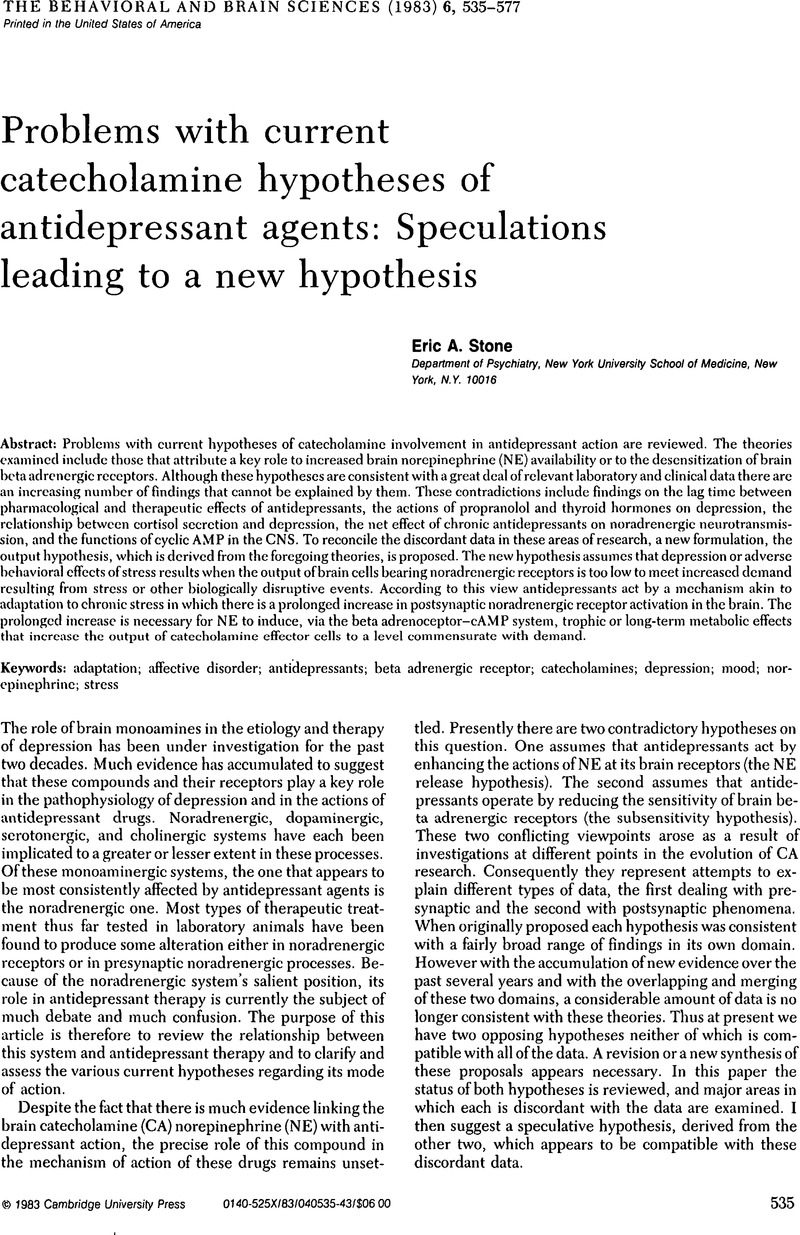Crossref Citations
This article has been cited by the following publications. This list is generated based on data provided by Crossref.
Hingtgen, J.N.
Hendrie, H.C.
and
Aprison, M.H.
1984.
Postsynaptic serotonergic blockade following chronic antidepressive treatment with trazodone in an animal model of depression.
Pharmacology Biochemistry and Behavior,
Vol. 20,
Issue. 3,
p.
425.
Hingtgen, Joseph N.
Fuller, Ray W.
Mason, Norman R.
and
Aprison, M.H.
1985.
Blockade of a 5-hydroxytryptophan-induced animal model of depression with a potent and selective 5-HT2 receptor antagonist (LY53857).
Biological Psychiatry,
Vol. 20,
Issue. 6,
p.
592.
Leander, J.David
1986.
Peripheral action of serotonin as a model of depression.
Biological Psychiatry,
Vol. 21,
Issue. 8-9,
p.
842.
Aprison, M. H.
and
Hingtgen, Joseph N.
1986.
Neuroregulation of Autonomic, Endocrine and Immune Systems.
Vol. 2,
Issue. ,
p.
443.
Hingtgen, Joseph N.
Shekhar, Anantha
DiMicco, Joseph A.
and
Aprison, M.H.
1988.
Response suppression in rats after bilateral microinjection of 5-hydroxytryptophan in lateral hypothalamus.
Biological Psychiatry,
Vol. 23,
Issue. 7,
p.
711.
2001.
Vol. 3,
Issue. ,
p.
2.
Kraemer, Gary W.
2007.
Ciba Foundation Symposium 123 ‐ Antidepressants and Receptor Function.
p.
216.


